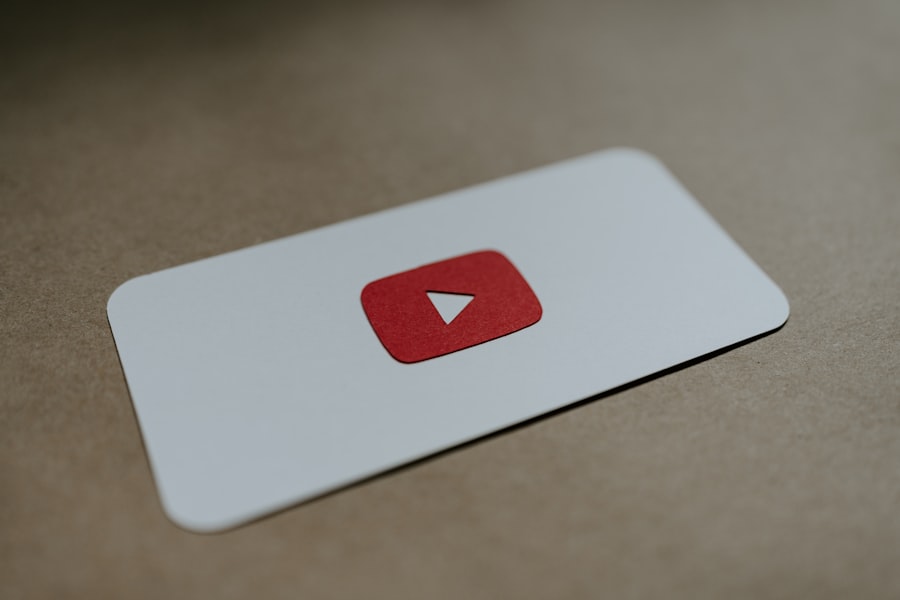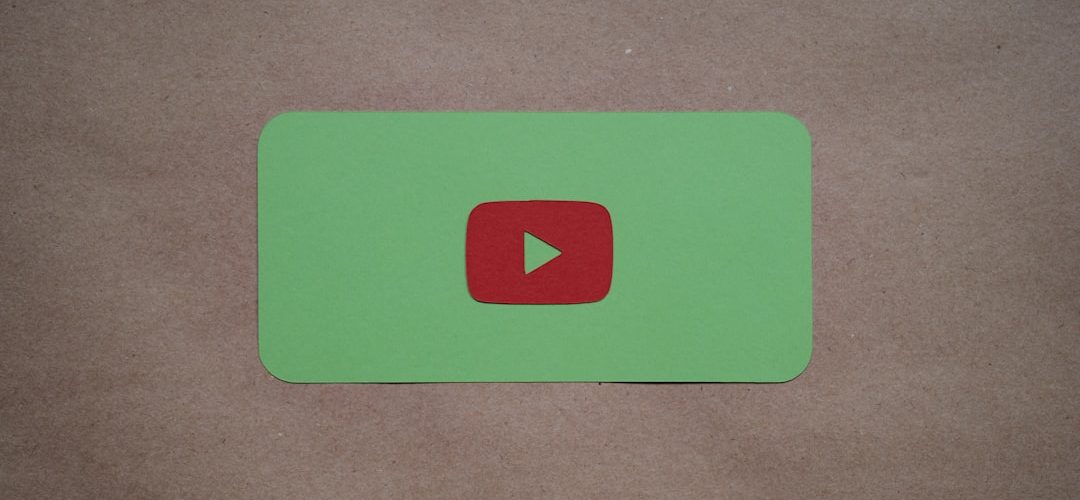As I delve into the world of YouTube, I quickly realize that Search Engine Optimization (SEO) is not just a buzzword; it’s a crucial element that can make or break my channel’s success. With millions of videos uploaded daily, standing out in this vast sea of content requires more than just creativity and passion. SEO helps me ensure that my videos are discoverable by the right audience.
By optimizing my content for search engines, I can increase my visibility, attract more viewers, and ultimately grow my subscriber base. Moreover, understanding SEO allows me to tap into the algorithms that govern YouTube’s search and recommendation systems. These algorithms prioritize content that is relevant and engaging, which means that if I can align my videos with what viewers are searching for, I can significantly enhance my chances of being featured in search results and suggested videos.
This not only boosts my channel’s reach but also fosters a community of engaged viewers who are genuinely interested in my content.
Table of Contents
ToggleKey Takeaways
- SEO is crucial for increasing visibility and attracting more viewers to your YouTube channel.
- Integrating your WordPress blog with your YouTube channel can help drive traffic and improve overall SEO.
- Optimizing video titles and descriptions with relevant keywords is essential for SEO on YouTube.
- Using keywords effectively in your YouTube videos can improve search rankings and attract the right audience.
- Creating engaging and SEO-friendly thumbnails can significantly impact the click-through rate of your videos.
Integrating Your WordPress Blog with Your YouTube Channel
Integrating my WordPress blog with my YouTube channel has proven to be a game-changer in my content strategy. By embedding my videos directly into blog posts, I create a seamless experience for my audience. This not only enriches the written content but also encourages readers to engage with my videos, leading to increased watch time and interaction.
Additionally, I can provide more context and depth to my video topics through written content, which can help in retaining viewers who prefer reading over watching. Furthermore, having a blog allows me to optimize for SEO in multiple ways. I can use my blog to target specific keywords that may not be as easily addressed in video format.
By writing articles that complement my videos, I can drive traffic from search engines to both my blog and YouTube channel. This cross-pollination of content not only enhances my online presence but also establishes me as an authority in my niche, making it easier for new viewers to discover my work.
Optimizing Your Video Titles and Descriptions for SEO

When it comes to optimizing video titles and descriptions, I’ve learned that these elements are critical for attracting viewers and improving search rankings. A compelling title not only grabs attention but also includes relevant keywords that potential viewers might use when searching for content like mine. I strive to create titles that are both descriptive and engaging, ensuring they reflect the essence of the video while enticing clicks.
In addition to titles, the description box is a powerful tool for SEO. I make it a point to write detailed descriptions that provide context about the video’s content. Including relevant keywords naturally within the first few sentences helps improve visibility in search results.
I also utilize this space to include links to related videos, my blog posts, and social media profiles, creating a comprehensive resource for viewers who want to explore more of what I offer.
Using Keywords Effectively in Your YouTube Videos
| Metrics | Value |
|---|---|
| Video Title | How to Use Keywords Effectively on YouTube |
| Keywords in Title | Yes |
| Keywords in Description | 3 |
| Keywords in Tags | 5 |
| Keywords in Video Content | 10 |
| Video Views | 1000 |
Keywords are the backbone of any successful SEO strategy, and I’ve found that using them effectively in my YouTube videos is essential for reaching a wider audience. Before creating content, I conduct thorough keyword research to identify terms and phrases that resonate with my target audience. This research informs not only my video titles and descriptions but also the content itself, ensuring that I address topics that viewers are actively searching for.
Incorporating keywords into my video scripts is another strategy I employ. By naturally weaving these terms into my dialogue, I enhance the likelihood of my videos being recognized by YouTube’s algorithm as relevant to specific searches. Additionally, I pay attention to the timing of keyword usage; mentioning key phrases early in the video can help signal to both viewers and the algorithm what the content is about right from the start.
Creating Engaging and SEO-friendly Thumbnails for Your Videos
Thumbnails serve as the first impression of my videos, making them a vital component of both engagement and SEO. An eye-catching thumbnail can significantly increase click-through rates, so I invest time in designing visuals that are not only attractive but also informative. I often use bold colors, clear text, and relevant imagery to convey the essence of the video at a glance.
Moreover, I understand that thumbnails should be optimized for search as well. Including keywords or phrases within the thumbnail can reinforce the video’s topic and improve its discoverability. By ensuring that my thumbnails are consistent with my branding while also being visually appealing, I create a cohesive look across my channel that helps build recognition among viewers.
Leveraging Tags and Categories to Improve Your Video’s Visibility

Tags and categories are often overlooked aspects of YouTube SEO, but I’ve found them to be incredibly useful in enhancing my video’s visibility. Tags allow me to associate my videos with relevant keywords and topics, helping YouTube understand what my content is about. When selecting tags, I focus on both broad terms and specific phrases that accurately describe the video’s content.
Categories play a similar role by helping YouTube place my videos in appropriate sections of the platform. By categorizing my videos correctly, I increase the chances of being recommended alongside similar content, which can lead to more views and subscribers. It’s essential for me to regularly review and update tags and categories as trends change or as new keywords emerge in my niche.
Encouraging User Engagement and Interaction on Your YouTube Channel
User engagement is a critical factor in determining the success of my YouTube channel. Encouraging viewers to like, comment, and subscribe not only fosters a sense of community but also signals to YouTube that my content is valuable. To promote interaction, I often pose questions or invite feedback at the end of my videos, creating an open dialogue with my audience.
Additionally, responding to comments is an essential part of building relationships with viewers. When I take the time to engage with comments, it shows that I value their input and encourages others to join the conversation. This interaction not only boosts engagement metrics but also helps me understand what resonates with my audience, allowing me to tailor future content accordingly.
Utilizing Backlinks and Social Media to Drive Traffic to Your Videos
To maximize the reach of my YouTube videos, I actively utilize backlinks and social media platforms as part of my promotional strategy. By sharing links to my videos on various social media channels—such as Facebook, Twitter, Instagram, and Pinterest—I can tap into different audiences who may not be aware of my YouTube channel. Each platform offers unique opportunities for engagement and sharing, allowing me to reach potential viewers where they already spend their time online.
Backlinks from reputable websites or blogs can also enhance my video’s credibility and visibility. When I collaborate with other creators or guest post on relevant blogs, including links back to my videos can drive traffic from those sources directly to my channel. This not only increases views but also improves SEO by signaling to search engines that my content is valuable enough to be referenced by others.
Analyzing Your YouTube Channel’s Performance with SEO Tools
To continuously improve my YouTube strategy, I rely on various SEO tools to analyze my channel’s performance. Tools like Google Analytics and YouTube Analytics provide valuable insights into viewer behavior, traffic sources, and engagement metrics. By examining this data, I can identify which videos perform well and which areas need improvement.
Understanding metrics such as watch time, click-through rates, and audience retention helps me refine my content strategy over time. For instance, if I notice that certain topics generate more interest or higher engagement rates, I can focus on creating similar content in the future. This data-driven approach allows me to adapt quickly to viewer preferences and optimize my channel for better performance.
Collaborating with Other WordPress Bloggers to Cross-promote Your Videos
Collaboration is a powerful tool in expanding reach and building community within both the blogging and YouTube spheres. By partnering with other WordPress bloggers who share similar interests or audiences, I can cross-promote our content effectively. This collaboration often involves guest posts or joint video projects where we can introduce each other’s audiences to our respective channels.
Through these partnerships, I gain access to new viewers who may be interested in subscribing or engaging with my content. Additionally, collaborating allows me to share diverse perspectives and ideas with my audience while enriching their experience on both platforms. It’s a win-win situation where we both benefit from increased exposure and engagement.
Staying Updated with SEO Trends and Best Practices for YouTube Channels
The digital landscape is constantly evolving, which means staying updated with SEO trends is essential for maintaining a successful YouTube channel. I make it a priority to follow industry blogs, attend webinars, and participate in online communities focused on SEO best practices specifically tailored for video content. This ongoing education helps me adapt to changes in algorithms or viewer behavior.
By keeping abreast of new tools and techniques, I can implement fresh strategies that enhance my channel’s visibility and engagement levels.
Whether it’s experimenting with new formats or adjusting how I optimize titles and descriptions based on current trends, staying informed allows me to remain competitive in an ever-changing environment. In conclusion, mastering SEO for my YouTube channel has been an enlightening journey filled with learning opportunities and growth potential.
By understanding its importance, integrating it with other platforms like WordPress, optimizing various elements of my videos, encouraging engagement, leveraging social media, analyzing performance data, collaborating with others, and staying updated on trends—I’ve been able to create a thriving channel that resonates with viewers while continually evolving in response to their needs.
If you’re looking to enhance your YouTube channel’s visibility as a WordPress blogger, it’s crucial to not only focus on SEO strategies but also ensure your website is optimized for performance. A related article that can provide valuable insights is “Maximize Your Website’s Potential with WordPress Hosting.” This article delves into the importance of choosing the right hosting service to improve your site’s speed and reliability, which can indirectly boost your YouTube channel’s success by providing a seamless user experience. For more information, check out the full article here.
FAQs
What is YouTube SEO?
YouTube SEO refers to the process of optimizing your YouTube videos to rank higher in search results and gain more visibility on the platform. This involves using relevant keywords, creating engaging content, and optimizing video metadata.
Why is YouTube SEO important for WordPress bloggers?
YouTube SEO is important for WordPress bloggers because it can help them increase their visibility and reach a larger audience. By optimizing their YouTube videos, bloggers can drive more traffic to their WordPress site and increase their overall online presence.
What are some YouTube SEO tips for WordPress bloggers?
Some YouTube SEO tips for WordPress bloggers include conducting keyword research to find relevant and high-traffic keywords, optimizing video titles and descriptions with keywords, creating engaging and high-quality content, and promoting videos across social media and other platforms.
How can WordPress bloggers boost their YouTube channel through SEO?
WordPress bloggers can boost their YouTube channel through SEO by consistently creating high-quality and engaging content, optimizing their videos for relevant keywords, promoting their videos across different platforms, and engaging with their audience to increase watch time and engagement.
What are some common mistakes to avoid in YouTube SEO for WordPress bloggers?
Some common mistakes to avoid in YouTube SEO for WordPress bloggers include using irrelevant keywords, neglecting video descriptions and tags, creating low-quality content, and not engaging with the audience. It’s also important to avoid keyword stuffing and using misleading thumbnails or titles.




